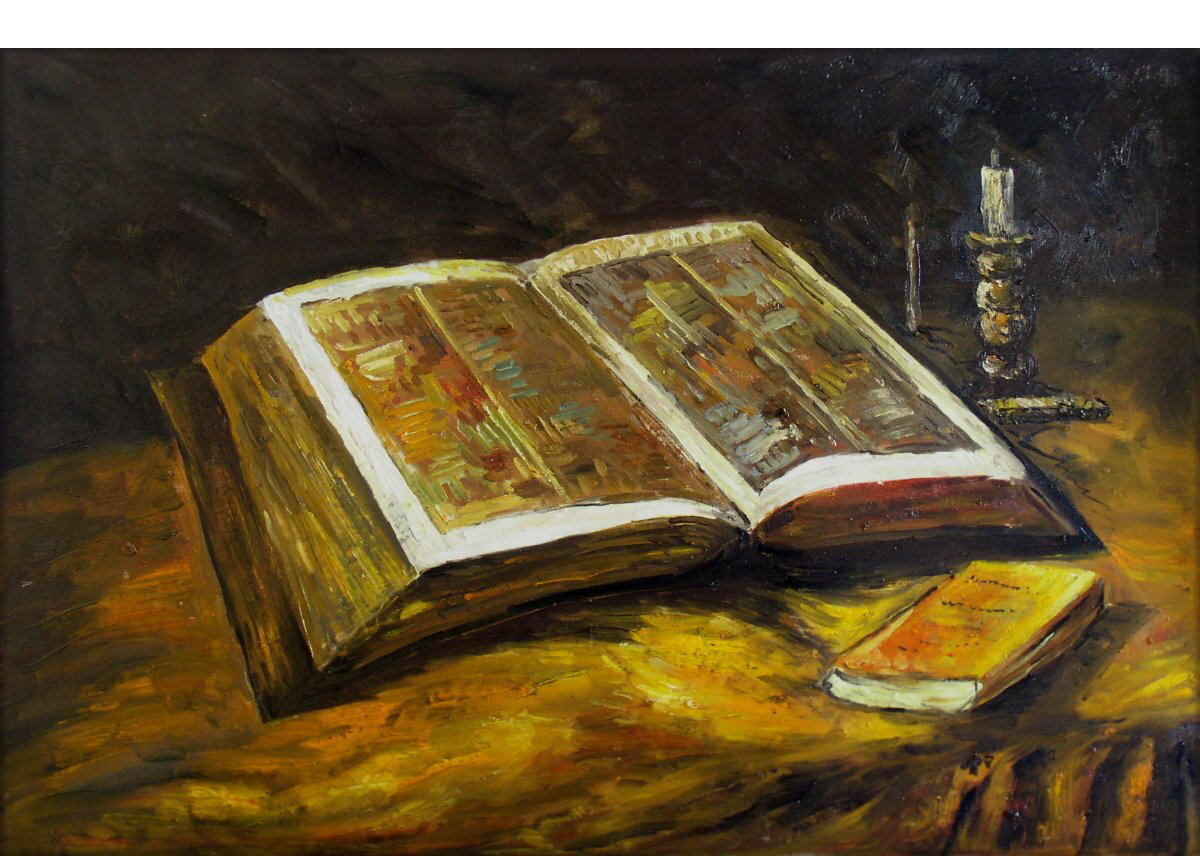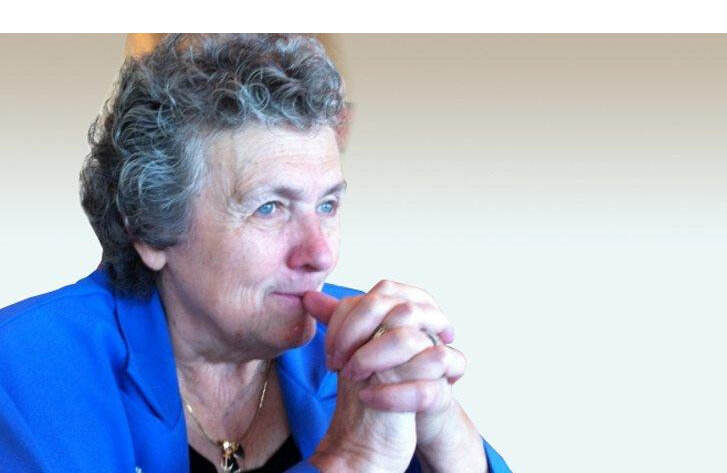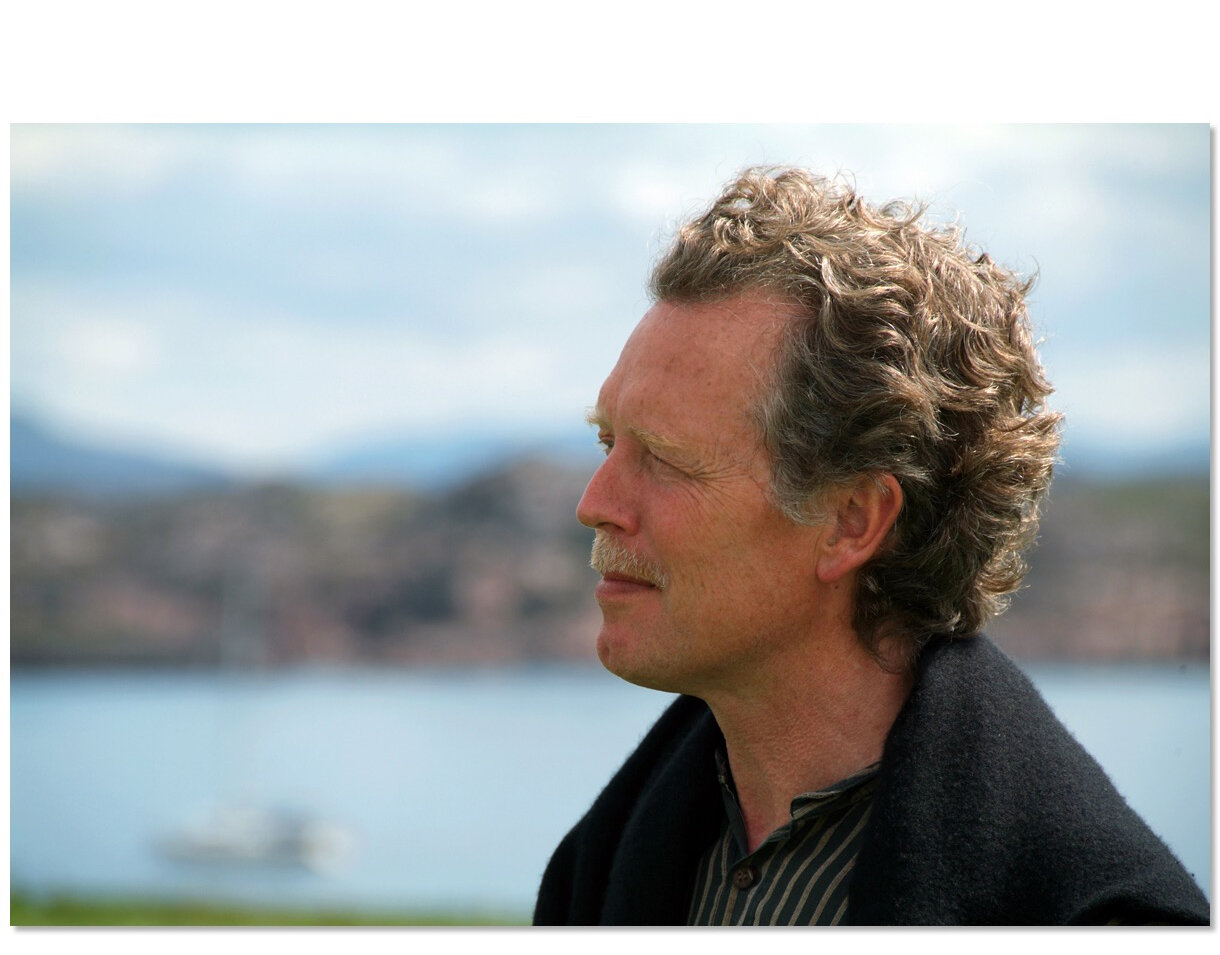
Doug King - “Spiral Dynamics, Deconstruction and the Future of Faith”- Presented by NOMAD PODCAST
From the Nomad Podcast Crew: We speak with Doug King about the evolution of his faith, progressing from Christian fundamentalism to a post-Christian identity. At the heart of Doug’s understanding of this journey is the historical framework of Spiral Dynamics, a model that illuminates the evolution of worldviews across cultures worldwide. This model reveals that the journey many of us have been on - from fundamentalism, through deconstruction, to a more expansive, inclusive spirituality - are not isolated personal experiences, but an integral part of the collective evolution of the human race.

“Does God Evolve?” by Philip Mereton
One popular approach to dealing with the diversity of religions is to adopt the view that each one—from Hinduism, Buddhism, and Taoism to Judaism, Christianity, and Islam—lays claim to its own spiritual world. No one religion has a monopoly on truth, enlightenment, or access to a supreme being. Given the diversity of faiths, a goal might be to seek understanding through a dialogue between followers of different belief systems while retaining a commitment to one's own faith. (See Harvard's Pluralism Project, whose stated mission is "to help Americans engage with the realities of religious diversity through research, outreach, and the active dissemination of resources": pluralism.org.) In this spirit, the Dalai Lama writes about a "true kinship of faiths," whereby followers of the world's religions are urged to seek a higher ground built upon compassion and understanding.

“Original Sin and Karma” by Seán ÓLaoire
Introduction: In the play, Hamlet, an officer in the Palace Guard famously opined, “Something is rotten in the State of Denmark.” If he had been more aware of the human condition in general, he might have said, “Something is rotten in the state of the world.” And, indeed, it is. This issue of human vicissitude is probably the most oft-treated theme in world literature. The writers of all scriptures get into it; so do the philosophers, metaphysicians, psychologists, playwrights, novelists – and Calvin and Hobbes. And I’ve had a shot at it myself. I’ve looked at it through the twin lenses of karma and original sin, in these four brief essays.

“Rediscovering Fire” by Ursula King - Religion, Science and Mysticism in Teilhard de Chardin
PIERRE TEILHARD DE CHARDIN'S vision was one of consuming fire, kindled by the radiant powers of love. It was a mystical vision, deeply Christian in origin and orientation. Yet it broke through the boundaries of traditional orthodoxies -- whether those of science or religion -- and grew into a vision which is global in intent.
His deepest desire was to see the essence of things, to find their heart, and probe into the mystery of life, its origin and goal. In the rhythm of life and its evolution, at the center of the cosmos and the world, Teilhard believed, is a divine center, a living heart beating with the fiery energy of love and compassion. Now, the heart is really a fleshly reality But the image of this very flesh, this concentration of living, breathing matter, came to symbolize for Teilhard the very core of the spirit.
PLEASE SUPPORT MS. KING’S SCHOLARSHIP

“ENTERING INTO THE KINGDOM — excerpt from THE KINGDOM WITHIN” by John A. Sanford
We have already seen that the kingdom is within all of us. But paradoxically only a few among the multitude will find their way to the kingdom. The many will pass by and not notice its reality, and even some who have been expressly invited to enter will not accept God’s invitation. So Jesus declares
“For many are called, but few are chosen.” (Matt. 22:14)
Those who do enter the kingdom are those who have come to recognize the reality of the inner world and to respond to its demands upon them for consciousness. This must always be an individual act of recognition; it cannot be accomplished so long as we are identified with a group. Yet most of us find our sense of identity only in our membership in the Church, the nation, the political party, or the gang on the street corner…
BUY JOHN A. STANFORD’S BOOKS

"A Friendship, A Love, A Rescue" by Parker Palmer
“…I stand among you as one who offers a small message of hope, that first, there are always people who dare to seek on the margin of society, who are not dependent on social acceptance, not dependent on social routine, and prefer a kind of free-floating existence under a state of risk. And among these people, if they are faithful to their own calling, to their own vocation, and to their own message from God, communication on the deepest level is possible. And the deepest level of communication is not communication, but communion. It is wordless. It is beyond words, and it is beyond speech and beyond concept.” ~Thomas Merton
— The Asian Journal of Thomas Merton
I met Thomas Merton a year after he died. I met him through his writing and through the communion that lies “beyond words,” met him in the seamless way good friends meet again after a long time apart. Without Merton’s friendship and the hope it has given me over the past forty-five years, I’m not sure I could have kept faith with my vocation, even as imperfectly as I have.
THANKS SO MUCH TO MR. PALMER FOR GIVING US GREAT INSIGHT INTO SUCH A SPECIAL MAN

“The Negative way” by Ryan Phipps
In the study of theology, if one studies long enough, it’s likely that they will come across a method of study called, “Via Negativa.”
Via Negativa is the Latin for, “The Negative Way.” It’s a type of theological thinking that attempts to describe God by negation— to speak only in terms of what may not be said about God.
The Irish theologian and philosopher, John Scotus Erigena defined Via Negativa as such:
“We do not know what God is. God does not know what God is because God is not any created thing. Literally God is not, because God transcends being.” ~ John Scotus Erigena
BE A SUPPORTER OF THE CHURCH IN BETHESDA

"The Divine Feminine" by Sunyata Satchitananda
The Divine Feminine is experiencing a re-emergence—a rebirth into the collective consciousness. For centuries she has been downplayed, demeaned, removed from her place of honor and reverence by the dominant patriarchal culture. We are now in a time when the Divine Feminine is the subject of intense interest and many conversations and she is beginning to receive the veneration and devotion she deserves. The Divine Feminine represents the supreme level of feminine expression and manifestation in the universe. She comprises the best of the feminine in all its measure.
CONSIDER SUPPORTING MR. SATCHITANANADA GOOD EFFORTS

"What is the Sacred Feminine?" by Vikki Hanchin, LSW
Defining the Sacred Feminine means various things as it is expressed along several dimensions of life:
1. In the spiritual dimension, it means including and valuing the feminine as an equally fundamental dynamic of the creative life force and the Divine, along with the masculine. The yang cannot exist without the yin. It means remembering our interconnection and oneness: we are not separate from each other and creation.
BE A SUPPORTER OF VIKKI HANCHIN’S WORK

“Turning the World right side up: The Feminine Remedy" by Marilyn Nyborg
The concept of the Sacred Feminine begins with the obvious but neglected truth that everything on Earth is born of the Feminine. The Feminine Principle of life is characterized by qualities that have been identified culturally as the domain of women, but in truth are an aspect of wholeness, in humanity and in life.
These qualities of the Feminine Principle are typically described as interconnection, unconditional love, nurturing, heart, inclusion, cooperation, receptivity, being, allowing, relatedness, intuition, oneness, and compassion. These qualities of wholeness have been at risk, being undervalued and nearly lost, under centuries of culture characterized by the unbalanced masculine love of power.
BE A SUPPORTER OF FMS. NYBORG’S WORK

"Bishop John Shelby Spong On: The Resurrection"
The Christian Faith was born in the experience that we have come to call Easter. It was this Easter experience that invested Jesus with a sense of ultimacy. It caused his followers to regard his teaching as worthy of being preserved. It was the reason that Saint Paul could write, “if Christ has not been raised then your faith is in vain.” Clearly without Easter there would be no Christianity. That assertion hardly seems debatable. At this point I discover that I am at one with the most literal fundamentalists.
BE A SUPPORTER OF BISHOP SPONG’S WORK

“Richard Rohr and the Alternative Orthodoxy” - The RobCast - Rob Bell Episode 86 |
ALTERNATIVE ORTHODOXY
Methodology: Scripture as validated by experience, and experience as validated by tradition, are good scales for one’s spiritual worldview.
Foundation: If God is Trinity and Jesus is the face of God, then it is a benevolent universe. God is not someone to be afraid of, but is the Ground of Being and on our side.
Frame: There is only one Reality. Any distinction between natural and supernatural, sacred and profane is a bogus one.
Ecumenism: Everything belongs and no one needs to be scapegoated or excluded. Evil and illusion only need to be named and exposed truthfully, and they die in exposure to the light.
Transformation: The separate self is the problem, whereas most religion and most people make the “shadow self” the problem. This leads to denial, pretending, and projecting instead of real transformation into the Divine.
Process: The path of descent is the path of transformation. Darkness, failure, relapse, death, and woundedness are our primary teachers, rather than ideas or doctrines.
Goal: Reality is paradoxical and complementary. Non-dual thinking is the highest level of consciousness. Divine union, not private perfection, is the goal of all religion.
BE A SUPPORTER OF FR. ROHR AND MR. BELL’S WORK

"Saved From God? Alternatives to Penal Substitution Atonement Theory" - Matthew Distefano
In so many words, this is the Gospel according to Western Christianity. Over the details we may quibble, but we are often told that Jesus died in order to save sinners from the wrath of God. In other words, he was a substitutionary sacrifice—he died in our place—to appease the Father’s justice, honor, and wrath. The story of how we get to such a place where we need such a sacrifice basically goes like this:
BE A SUPPORTER OF MR. DISTEFANO’S WORK

"At-One-Ment, Not Atonement" by Fr. Richard Rohr
The common reading of the Bible is that Jesus “died for our sins”—either to pay a debt to the devil (common in the first millennium) or to pay a debt to God (proposed by Anselm of Canterbury, 1033-1109). Franciscan philosopher and theologian John Duns Scotus (1266-1308) agreed with neither of these understandings.
Duns Scotus was not guided by the Temple language of debt, atonement, or blood sacrifice (understandably used by the Gospel writers and by Paul). He was inspired by the cosmic hymns in the first chapters of Colossians and Ephesians and the Prologue to John’s Gospel (1:1-18) and gave a theological and philosophical base to St. Francis’ deep intuitions of God’s love. While the Church has not rejected the Franciscan position, it has been a minority view.
BE A SUPPORTER OF C.A.C AND FR. ROHR’S WORK

“Atonement” by Richard Rohr
Two generations ago, the landmark theologian in our tradition (Nazarene), H. Orton Wiley, wrote that the penal substitution theory of the atonement was inconsistent with Wesleyan (Nazarene) theological commitments, and therefore could not be our atonement theory. Franciscan priest and thinker Richard Rohr is also concerned that penal substitution has led western Christianity down very negative pathways. He writes,
“For the sake of simplicity and brevity here, let me say that the common Christian reading of the Bible is that Jesus “died for our sins”— either to pay a debt to the devil (common in the first millennium) or to pay a debt to God the Father [proposed by Anselm of Canterbury [1033– 1109] and has often been called “the most unfortunately successful piece of theology ever written”.
BE A SUPPORTER OF THE CENTER FOR ACTION AND CONTEMPLATION

"Myth and the Bible" (Parts 1, 2) by Jeffery Small
When you hear the word “myth” associated with the Bible, what is the first thought that comes to your mind? Do you define the word “myth” to mean that the stories described are not factually true?
My reading of the Bible has undergone an evolution over the years. As a child, I was taught the various stories as if they were actual historical events. As my understanding of science and the world began to broaden, I saw that a literal reading of many of these stories was impossible. I came to view the Bible as myth, by which I meant non-historical stories that contained a moral message. Today, my understanding of the Bible as myth has taken another step. Although I still do not believe that many of the stories are historically or factually accurate (although they may be anchored in historical events), I view “myth” in a broader and more meaningful sense. Mythology is a form of literature that expresses fundamental truths in a way that ordinary discourse is inadequate to describe. Mythology adds a richness of detail and a concreteness to metaphorical language. Now when I refer to the stories in the Bible as mythology, I do not intend to do so pejoratively. Reading these stories as myths gives me the freedom to understand their underlying meaning in a way I never could before.
BE A SUPPORTER OF MR. SMALL’S WORK

"What Is the Sacred Feminine? An excerpt from Voices of the Sacred Feminine" edited by Rev. Dr. Karen Tate by Amy Peck
The Sacred Feminine is a concept that recognizes that “God” ultimately is neither anthropomorphically male or female but a Divine Essence (Goddessence) beyond form and duality – an essence that is in balance and unification of masculine and feminine principles – a dynamic interdependent “Immanence” that pervades all life. The Asian Yin Yang icon is a good representation of this idea.
BE A SUPPORTER OF KAREN TATE and AMY PECK’S WORK

“The Seven Blessings That Come With Aging" by Sister Joan Chittister, OSB
The one certain dimension of US demographics these days is that the fastest growing segment of the American population is comprised of people above the age of 65. We, and all our institutions, as a result, are a greying breed. At the same time, we are, in fact, the healthiest, longest lived, most educated, most active body of elders the world has ever known. The only real problem with that is that we are doing it in the face of a youth culture left to drive a capitalist economy that thrives on sales.
SUPPORT BOTH THE HUFFINGTON POST AND SISTER CHITTISTER

"LISTENING: Two Ways Of Listening: John and Peter" by J. Philip Newell
The stream of Celtic spirituality, from Pelagius in the fourth century to George MacLeod in the twentieth, is characterized by the expectation of finding God within, of hearing the living voice of God speaking from the very heart of life, within creation and within ourselves. It is a spirituality that recognizes the authority of Saint John and reflects his way of looking and listening for God. At the decisive Synod of Whitby in 664, where two distinct ways of seeing, represented by the Celtic and Roman missions, came into conflict, the former allied itself to John. Coleman of Lindisfarne argued that the Celtic tradition originated from Saint John, the disciple who was, he said, “especially loved by our Lord.” Wilfrid, on the other hand, argued for the Roman mission, which, he claimed, was based on the authority of Saint Peter, whom he called “the most blessed Prince of the Apostles.” The tragic outcome of the synod was not that it chose the Roman mission but that it neither made room within the church for both ways of seeing or declared that both were firmly rooted in the gospel tradition.
BE A SUPPORTER OF MR. NEWELL’S WORK

"The Sacred Feminine Today" by Llewellyn Vaughan-Lee
Today there is a resurgence of interest in the sacred feminine. The immense popularity a few years ago of Dan Brown’s The Da Vinci Code spoke not just to our enjoyment of a good thriller but also to the mystery of the divine feminine in Western culture, which is the real thread of the book’s chase, from the enigmatic smile of the Mona Lisa to the search for the grail and the heritage of Mary Magdalene. We know now how the feminine mysteries were present in Greek culture and myth, as imaged in the story of Persephone, and enacted for more than 2,000 years in the initiations at Eleusis. In the early Christianity women had spiritual equality, and the significance of Mary Magdalene, the disciple whom Jesus loved more than others, being the first to see the risen Christ, points to the esoteric significance of the feminine. We have also learned how the power of the sacred feminine was repressed by the Church fathers, and Mary Magdalene purposely misidentified as a prostitute.
SOURCE: PLEASE SUPPORT THE HUFFINGTON POST

